Introducing an extra fragrant Kung Pao Sauce that let you cook genuine Sichuan food in your own kitchen!
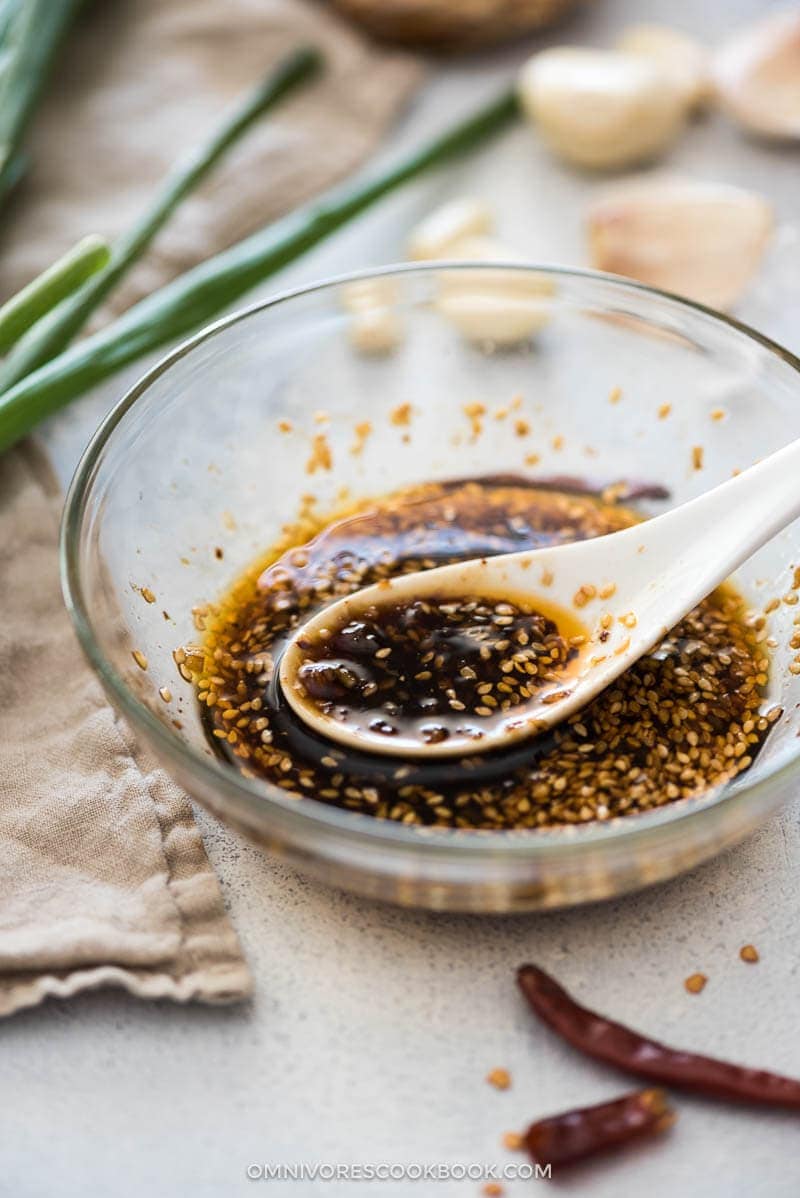
Kung Pao sauce is such a popular and classic sauce that every chef has their own interpretation. It can be extra spicy, more savory, or syrupy. The version I like the most is the type that balances savory, sweet and spicy with a gentle numbing sensation and a little extra sour kick.
If you’ve never cooked a stir fry before and feel intimidated by words such as “wok” and “cook with high heat” – now is your chance to cook your favorite takeout dish by following three simple steps.
- Prepare the stir fry sauce by using the recipe at the bottom of this post.
- Prepare one protein and / or one vegetable ingredient.
- Cook the protein and vegetables until they’re just done, pour in the stir fry sauce, and mix well.
Sounds super easy, right?
To see how to use the Kung Pao Sauce in practice, check out my Kung Pao Shrimp and roasted Kung Pao Brussels Sprouts recipes.
Why roasted? Isn’t this a stir fry sauce?
That’s right! You can use the same stir fry sauce to make many other easy and delicious dishes, including roasted veggies!
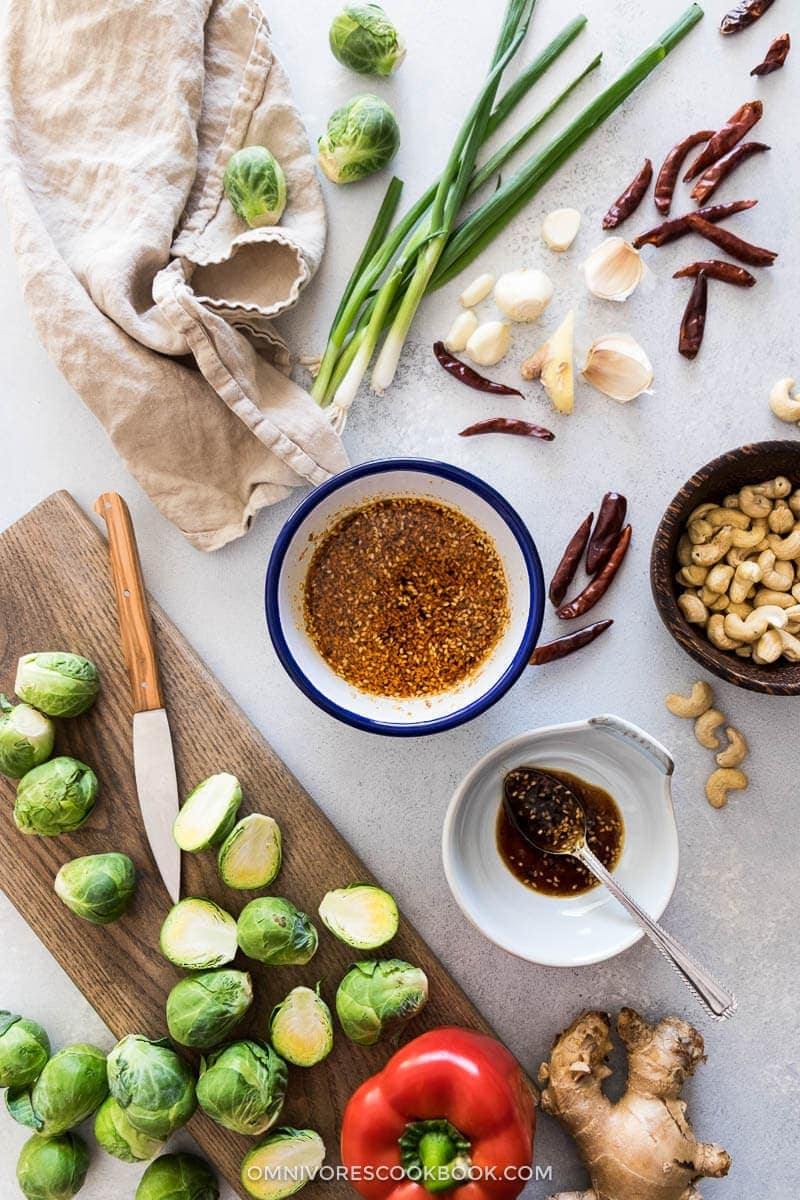
What makes a great Kung Pao Sauce (for serious cooks)
Sichuan Peppercorns and Sichuan Chili Peppers are the two crucial ingredients that make this sauce stand out. Although my recipe calls for chili flakes and ground Sichuan peppercorns, you will get a much more fragrant sauce if you use whole spices.
Fresh Sichuan peppercorns are extremely fragrant. Opening a jar of Sichuan peppercorns is like opening a perfume cabinet, only the aroma lingering around your nose is numbing, tingling and refreshing like mint. They add a savory, smoky and slightly citrusy flavor into the sauce that makes genuine Sichuan food. The peppercorns are a must-have item in my pantry.
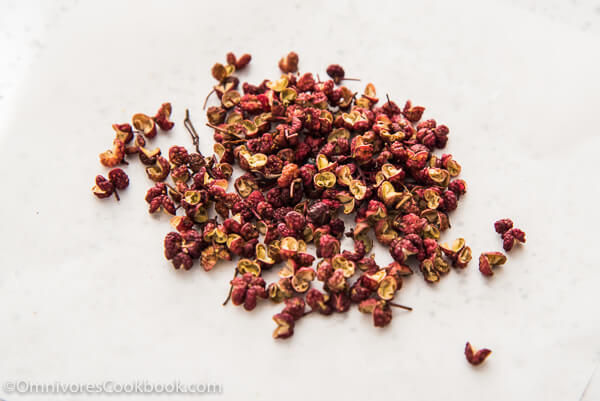
Real Sichuan food uses different types of chili peppers to adjust heat level and smokiness. Just like making a proper pot of chili, you start by selecting a combination of chili peppers to set the tone of the dish, toast the peppers to release their aroma, then grind them down. The same logic applies when dealing with Sichuan peppers.
To make the chili flakes and ground Sichuan peppercorns, toast them separately in a small saucepan until the color darkens slightly and the spices release a strong fragrance. Transfer them to a plate to cool completely, and then grind them up in a coffee grinder. Place in an airtight jar and store in the fridge. You should always prepare them in small batches, because these spices lose fragrance very fast.
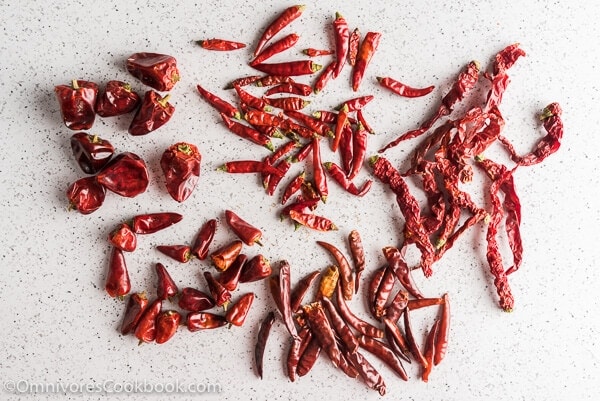
How to cook the Kung Pao Sauce with any ingredients
Assuming that you’re going to make 2 servings, you can use 450 grams (1 pound) protein, or 6 to 8 cups vegetables, or 220 grams (1/2 pound) protein and 3 cups vegetables.
You will need 1/4 to 1/3 cup homemade Kung Pao Sauce.
(PS: most of the stir fry starts with fresh aromatics. But since we’re using plenty of garlic and ginger in this sauce, we’ll skip this step.)
(1) Choose and cut the protein.
Recommended Protein
- Beef (flank steak or short ribs) – thinly sliced (1/8 to 1/4-inch thick), or cut to strips
- Chicken (skinless boneless breast or thigh) – diced to 1-inch pieces, or sliced to 1/4-inch thick
- Pork (tenderloin or loin) – thinly slice (1/8 to 1/4-inch thick), or cut to strips
- Shrimps – peeled and deveined
- Tofu (firm or extra firm) – diced to 1/2 to 2/3 inch pieces
(2) Marinate and prep the protein.
For each pound of meat or seafood, mix with 1 tablespoon vegetable oil (or peanut oil), 1/4 teaspoon salt, and 1 tablespoon cornstarch. Let marinate for 5 to 10 minutes.
To create restaurant-style crispy chicken, learn this method so you can achieve the same texture without deep-frying.
For tofu, marinate with 2 tablespoons soy sauce and 1 tablespoon syrup (or honey) for 10 to 15 minutes. Drain and coat with a thin layer of cornstarch. See this post to learn how to cook crispy tofu without deep-frying.
[one_half padding=”0 0 0 2px”]

[/one_half]
[one_half_last padding=”0 0 0 2px”]
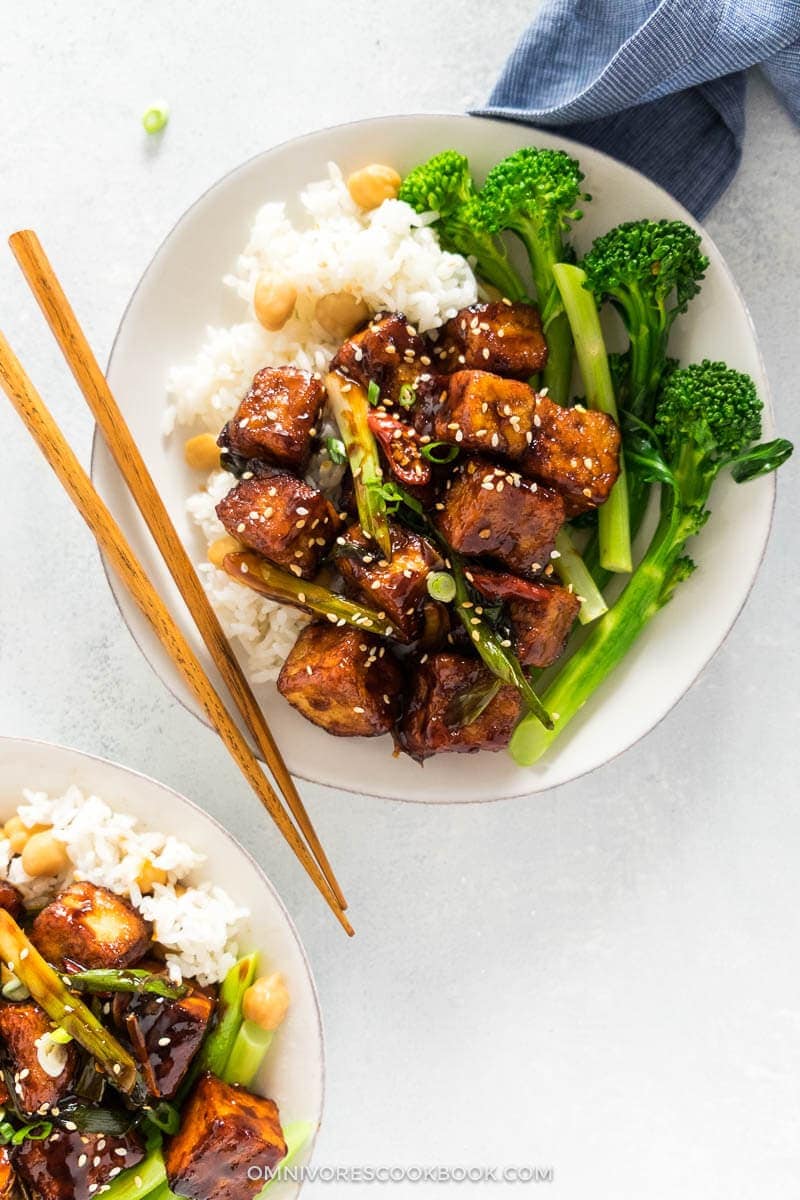
[/one_half_last]
(4) Cut and prep the vegetables.
To make a quick dinner, my favorite way is to only use one type of vegetable. You can use two, but ideally no more.
Recommended vegetables
- Asparagus – Chopped to 1-inch pieces
- Baby bok choy – Tear off large leaves and halve lengthwise, halve or quarter the rest
- Bell peppers – Sliced or chopped
- Broccoli (fresh) – Divide into small florets; steam or blanch (see this post to learn how to blanch the broccoli quickly in the same stir fry pan)
- Broccoli (frozen) – Microwave for 2 to 4 minutes (depending on the quantity), so the broccoli is thawed and lukewarm, but not hot.
- Brussels sprouts – Roasted (see this post for how to roast Brussels sprouts)
- Cauliflower (fresh) – Divide into small florets; steam, blanch, or roast
- Cauliflower (frozen) – Microwave for 2 to 4 minutes (for stir fry), or roast (see this post to learn how to crisp up frozen cauliflower in the oven)
- Carrot – Sliced into pieces or strips (by using a julienne peeler); or cut into chunks and roasted
- Celery – Sliced or diced
- English cucumber – Seeded, then sliced or diced.
- Eggplant – sliced (see this post to learn how to prep eggplant so it crisps up during stir frying)
- Kale – Stalk chopped into small pieces, leaves coarsely chopped
- Onion – Sliced
- Snow pea
- Zucchini – Seeded and sliced
(5) Make the stir fry, or use the stir fry sauce on baked food.
Read this post to learn the basic steps of making Chinese stir fry.
Kung Pao Sauce Recipes
Here is some examples of how to use the Kung Pao Sauce:
- Kung Pao Shrimp
- Roasted Kung Pao Brussels Sprouts
- Kung Pao Chicken (replace the sauce in the recipe with this Kung Pao sauce)
Here are some other ways to use this Kung Pao Sauce:
Note: the recipes below are developed using other types of stir fry sauce. To give them a Kung Pao flavor instead, simply replace the sauce in the recipe with this Kung Pao sauce.
- Kung Pao Crispy Tofu
- Roasted Kung Pao Cauliflower
- Crispy Kung Pao Chicken (bigger chicken pieces with batter)
[one_half padding=”0 0 0 2px”]
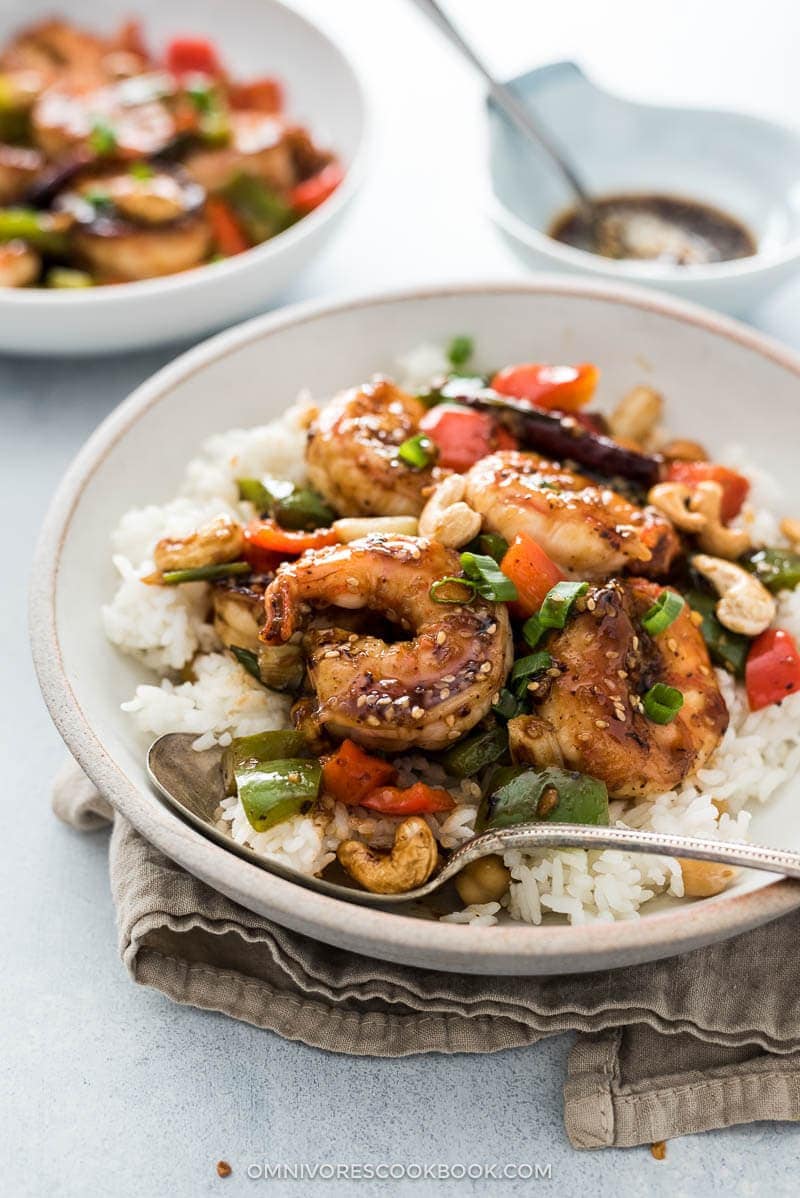
[/one_half]
[one_half_last padding=”0 0 0 2px”]

[/one_half_last]
If you give this recipe a try, let us know! Leave a comment, rate it (once you’ve tried it), take a picture and tag it @omnivorescookbook on Instagram! I’d love to see what you come up with.
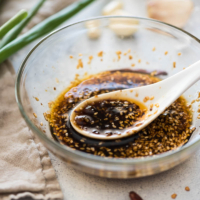
Homemade Kung Pao Sauce
Ingredients
- 3 tablespoons peanut oil (or vegetable oil)
- 2 tablespoons white sesame seeds
- 2 teaspoons Chinese chili flakes (or Korean chili flakes) (*Footnote 1)
- 1 teaspoon ground Sichuan peppercorns
- 8 cloves garlic , minced
- 2 tablespoons minced ginger
Mix
- 1/2 cup Chinkiang vinegar
- 1/4 cup light soy sauce (or soy sauce)
- 1/4 cup Shaoxing wine (or dry sherry, or water)
- 1/3 cup sugar
- 1 tablespoon cornstarch
- 1/2 teaspoon coarse sea salt (or 1/4 teaspoon fine sea salt)
Instructions
- Combine Chinkiang vinegar, light soy sauce, Shaoxing wine, sugar, cornstarch, and salt in a small bowl. Set aside.
- Add peanut oil, chili pepper flakes, and sesame seeds in a sauce pan. Cook over medium low heat until it reaches a gentle sizzle. Turn to medium low heat. Cook and stir until the chili powder turns dark brown (without turning black). If the oil start to bubble fiercely, remove the pan from the heat.
- Add ground Sichuan peppercorns, garlic and ginger. Cook and stir for another 30 seconds to release fragrance.
- Stir the vinegar-based sauce with a spoon to dissolve cornstarch completely. Carefully add to the saucepan. Cook and stir until the sauce thickens just enough to coat a spoon (the sauce will thicken once cooled down). Transfer to a bowl immediately.
- Once the sauce is cooled down completely, transfer to an airtight jar. Store in the fridge for 1 to 2 weeks. Store the sauce in the freezer for longer period of time.
Notes
- Chinese and Korean chili flakes are quite mild and are suitable for using in this sauce. If you’re not sure about the heat level of your chili flakes, start with 1 teaspoon chili flakes so your sauce won’t turn out too spicy. Alternatively you can use 1 teaspoon cayenne powder.
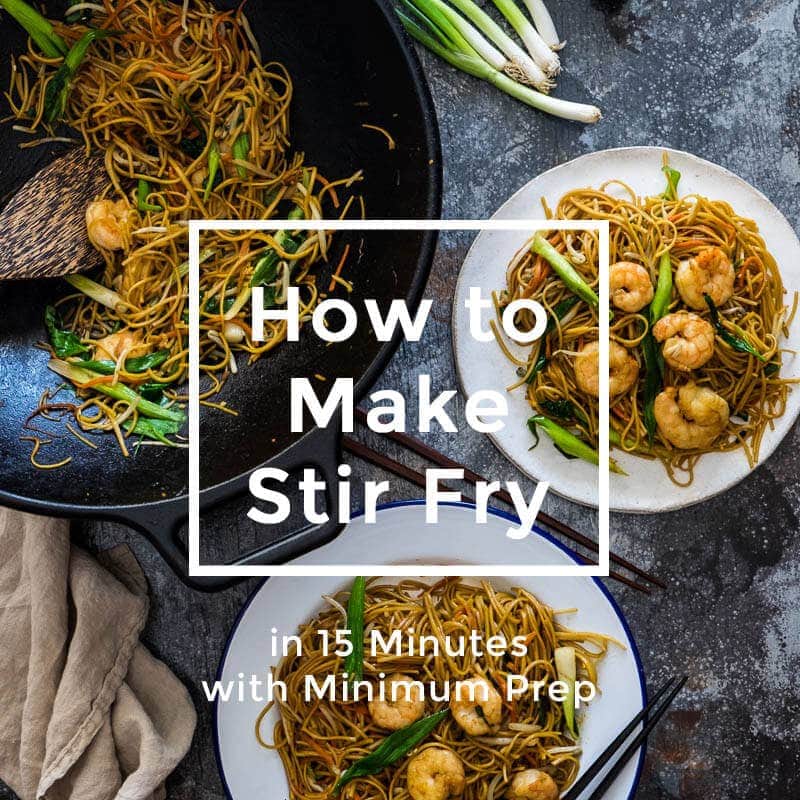














I can’t wait to try this! We’ve loved your General Tso’s sauce recipe and use it all the time. Our favorite stir fry with it has been chicken, onions, and scallions.
Hi Jennie, I’m so happy to hear that you like my General Tso’s sauce recipe! In this case, you’ll definitely like the Kung pao sauce as well 🙂 It goes great with chicken and onion too.
Happy cooking and let me know how the dish turns out!
It would be good but the balance is off. It’s too vinegar forward. I’d follow the concept again but lower the ratio of vinegar to soy. I’d also use less sugar and make it brown sugar. More ginger. It really would be great if it weren’t for the vinegar overwhelming everything
Maggie,
2018 is the year that I follow through and increase my knowledge from only creating stir fry into more complicated dishes.
Although eggplant is not more complicated, it is what brought me to your website. I had been looking for a good eggplant recipe .
I was introduced to eggplant parmesan and Thai eggplant and came to realize each culture has its own take on eggplant… So here I go.
Steve
Absolutely delicious! The fragrance alone is irresistible. I made it last night and used it with your brussels sprouts recipe, and everyone loved it. How long will the sauce keep in the fridge?
Hi Maggi,
I would really like to know what is Chinkiang vinegar. Is it red or rice vinegar?
Kind Regards
Lily
It is a black vinegar. I don’t think there is a good substitute as it is a distinct taste but I’m no expert.
Your blog is awesome and inspired many dinners using your recipes. Thanks!
In this sauce, can you omit the sesame seeds or replace them with something else? (cooking for someone who is allergic to sesame )
Maggie, this recipe was delicious. I was out of white sesame seeds so I substituted in some tahini (sesame paste). It turned out great. The only problem I had was that the recipe I used didn’t make enough. As I was finishing the sauce, I couldn’t resist continuously going back in for another taste to see if it was as good as the last taste! Outstanding! 🙂
A terrific sauce with great depth of flavor. Made this sauce yesterday for Chef Zhu’s Kung Pao Shrimp last night for dinner. Had this stir fry over pan fried noodles. The sauce certainly makes the dish. With plenty of sauce left over I’ll be having another Kung Pao dish soon. For 2 – 3 years I’ve been making Chef Ming Tsai’s Kung Pao sauce which had been receiving mixed reviews: my roommate is a female critic from Canton. A major difference is that Chef Zhu’s sauce has far less soy sauce: 1/4 cup light vs 1 cup of dark sauce, hence Chef Zhu’s is far less salty and allows the flavors of the fresh herbs/seasonings to come through and brighten the dish.
Chef Zhu’s list included “2 ginger , minced large slices” which puzzled me but since “the more the merrier” with fresh fragrances I opted for 2 tablespoons minced and the results were … well I covered that.
Happy New Year to all.
Hi Rob, glad to hear you like the recipe and thanks for pointing out the ginger part. I’m slowly transforming my recipe using a different format so the wording got messed up sometimes. Just updated it!
Happy New Year!
Amazing ! Came across this quite accidentally and it’s so informative and simple
It’s VERY RARE that I find an authentic recipe and make it a keeper. This is one of those rare ones. Just made this and it’s a 5 Star one !! It does help having all authentic ingredients. Thanks SO much for sharing this. I’m going to subscribe so as not to miss a recipe.
First of all… I am a typical American of German stock, married to a wonderful lady from Malaysia (Chinese)… So I am always trying to impress her with my Chinese cooking… FINALLY! Nailed it with your recipe… Made kung pao shrimp the other day with carrots, celery, and onions. Seasoned the shrimp like you explain. Turned out wonderful…
But I couldn’t help my German self… Tonight I was getting ready to make a couple hotlink sausages. Pulled out hot dog buns but then had an idea… I split the sausages lengthwise so I could fold them open and grill on a iron skillet. I have an iron searing press, so just let it sit on the sausages for a while on both sides. Taking them off the skillet I spooned a little of your kung pao sauce which I made made a new batch of this afternoon… Sprinkled chives on them and topped with fried onions…
HOLY COW! Kung Pao Hotlinks!!! It was wonderful…
Nice sauce but I feel it is too vinegar forward. I added some dark soy and Spicy Chili Crisp to balance the vinegar and add some heat.
Can i make kung pao sauce with all ingredients mixed and store it for later use ? And for long it can be stored ?
Hi
I recently went to the Asian mkt and found green fresh sichuan . How do I use that versus the red one ?
You can use it at the beginning of the cooking to infuse oil – add them to the heated oil (not too hot), roast them for a few minutes over medium low heat to release fragrance, then scoop out and discard. Then you can follow the recipe as it is.
Green Sichuan pepper taste different than the red, but I think you can use it in this recipe as well.
We frequently make this sauce and use it for Kung Pao fried rice. It tastes great.
Our new favorite sauce. It inspired me to go through all your recipes and techniques. Loving what we’re making. You have greatly expanded my repertoir.
This was a fantastic sauce!!
I don’t know how many times I’ve made this sauce. A big hit every time. Had another recipe by the same name but this is my “go to” kung pao now.
Thanks again Chef Zhu !!!
I came to this website looking for a Kung Pao sauce like my local Chinese restaurant. After I made this, I was initially disappointed because it was nothing like theirs. After a few bites I realized it was SO much better and then after a couple of more bites realized that I was absolutely in love with this sauce. I’ve made it several times now in the last 10 days and eat it on streamed vegetables almost daily. Thanks so much for sharing your recipes. I can’t wait to make more! The Mala Market Sichuan peppercorns are the best I’ve ever used, too.
I was worried when I read half way through when you said it was disappointing lol But glad to find out it worked out and you liked it 🙂 Thanks for leaving a positive review!
I love this recipe. I was nervous about making it but it turned out delicious. I love all your recipes. We’ve stopped going to our local takeaway because we prefer the flavours of your recipes